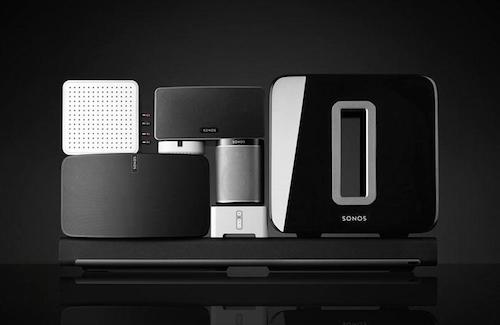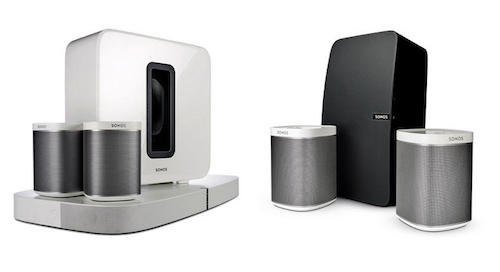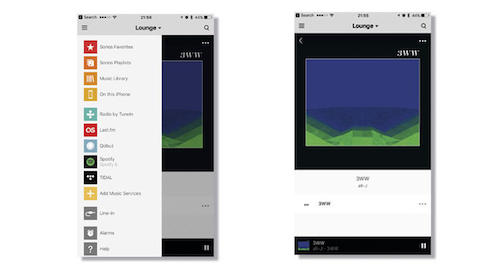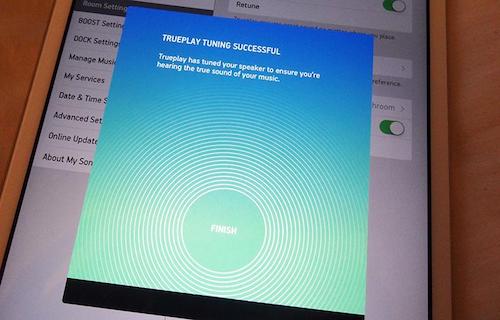Want to listen to music anywhere in the house? A wireless Sonos system may be the answer. But what is it, what can it do, and what are the alternatives? We're here to help.
Gone are the days when your music or hi-fi system was restricted to one room, tethered by cables.
Listening to your entire music collection anywhere in your home used to involve overcoming some major logistical issues. You'd either need to move your sound system from room to room, put up with wires and cables trailing under doors and rugs and up the stairs, or you could spend a fortune on a custom install system.
The rise of digital and computer-based music, a multitude of streaming music services, and wi-fi in nearly every home changed that. The wireless revolution paved the way for a whole new realm of possibilities.
You can now stream your music from a range of devices - smartphone, laptop, NAS drive - to multiple speakers around the home using a wireless connection. There are plenty of manufacturers that offer this multi-room experience, but US company Sonos continues to lead the way with its well-developed system.
Here, we'll guide you through everything about Sonos and the way it works, and help you set up your own multi-room system.

WHAT IS SONOS? HOW DOES IT WORK?

Based in California, Sonos was founded in 2002 with one simple aim: to transform your home sound system for the digital age. Its products and software are designed to fill every room of your home with music, and the flexibility and functionality of its products has made the company a household name.
The Sonos wireless sound system works by connecting one single speaker to your home network, then adding more Sonos units (up to a maximum of 32, dotted around the house) into the mix using a dedicated secure wireless mesh network known as Sonosnet.
That network is integral to the way Sonos's multi-room speakers operate, as it sits separate from your home network. That means it's a stronger, more robust signal and isn't prone to dropouts when streaming music.
Sonos launched the amplified ZonePlayer ZP100 and CR100 controller back in 2004. And it hasn't looked back since, continuing to innovate with new products to expand and enhance the listening experience at home, while adding streaming services to its ever-growing roster of offerings.
SONOS: GETTING STARTED
A major part of Sonos's appeal and meteoric rise in popularity lies with its hugely simple set-up process.
The Sonos Controller app (available on Android and iOS) will walk you through the set up, but it requires little more than pressing the speaker's sync button, which links them to your network and other Sonos speakers, finding the connected speaker on the app and entering details such as your wi-fi password.
It's really that simple. And the slick, easy-to-use Controller app makes everyday use even easier.
In the app, you can assign each speaker to a room of your house, programme it so the volume can be controlled via your TV's standard remote, and add your favourite streaming services. The app recognises which speaker you're using, and in which room you're using it.
Adding other speakers is a breeze: just tap in the app to add a new speaker, press the sync button on the back and it's all done. It's still the smoothest multi-room set-up going.
Along with the main six Sonos products (Play:1, Play:3 and Play:5 wireless speakers, and the Playbar, Playbase and Sub for use with a TV), there are ancillary products such as the Sonos Boost (£100). Connecting this box directly to your router will expand and strengthen the wi-fi for Sonos products. It broadcasts 360 signals through walls and ceilings - ideal if you're setting up a multi-room system in challenging wireless environments.
You don't have to part with your beloved hi-fi system for Sonos to work, either. If you have a traditional stereo amplifier and speakers set up, add a Sonos Connect (£350) to turn it into a streaming system. Similarly, the Connect:Amp (£500) combines streamer and amplifier - so you can simply add it to your existing pair of stereo speakers.

SONOS APPS AND SERVICES

The Sonos Controller app is a large part of the system's charm. As well as walking you through the set-up, it's where you can control all aspects of your Sonos products and access your entire music library.
Sonos's mission statement is to offer 'all the music on Earth', so along with playing music from digital libraries (such as from a NAS device or a laptop), you'll find the widest choice of streaming service compatibility on the app. It's the most comprehensive list we've seen in a wireless speaker or soundbar.
Apple Music, Amazon Prime Music, Google Play Music, Spotify, Deezer, Pandora, Soundcloud, TuneIn - the list of apps goes on. It's worth noting that you will need premium subscriptions for some of these.
Additionally, Qobuz and Tidal bring CD-quality, lossless streaming to Sonos. While the other music services offer files up to 320kbps, Qobuz and Tidal offer unlimited streaming access to CD-quality FLAC files at 16-bit/44.1kHz for a monthly subscription charge.
You can also build playlists directly within the Sonos app, and from multiple sources as well. So if you want to add tracks from Spotify and Tidal onto a playlist of tracks from your NAS library, you can.
TRUEPLAY
Where you place your Sonos speaker in the room will affect the sound. Sonos's Trueplay feature within the Connect app (available on iOS only) aims to counter this, using the microphone on an iPhone or iPad to measure the response of the speaker in your room and tweak its sound to suit.
This set-up process runs through a series of test tones and sweeps, which will be familiar to anyone who has set up an AV receiver. The process tunes your speaker to the room, adjusting the bass and the treble to get it sounding the best it can.
Trueplay's calibration is particularly useful if your Sonos speaker is placed in a less-than-ideal location, such as tucked into a corner.
Of course, if you don't like the changes, you can always set it back to default.

